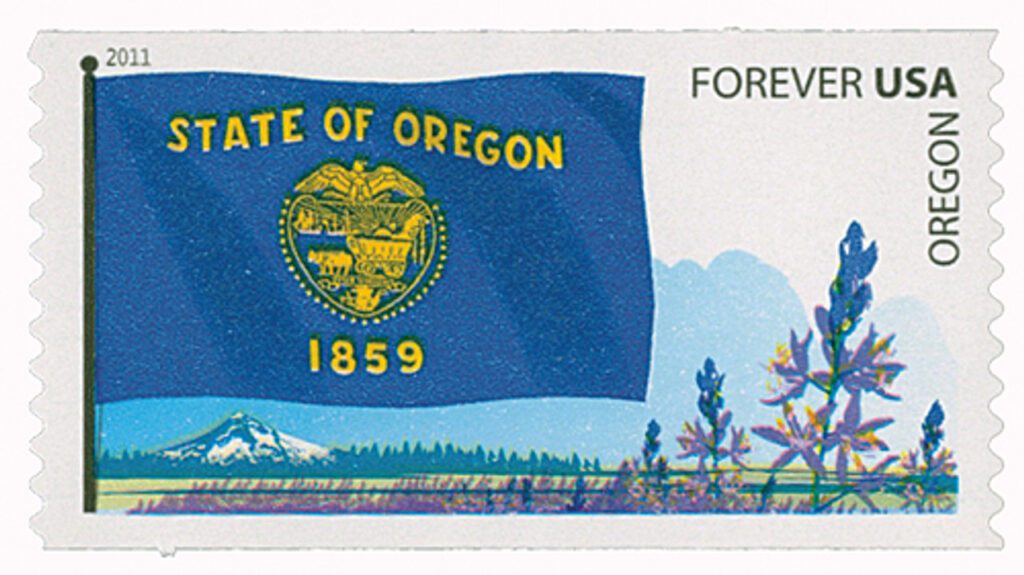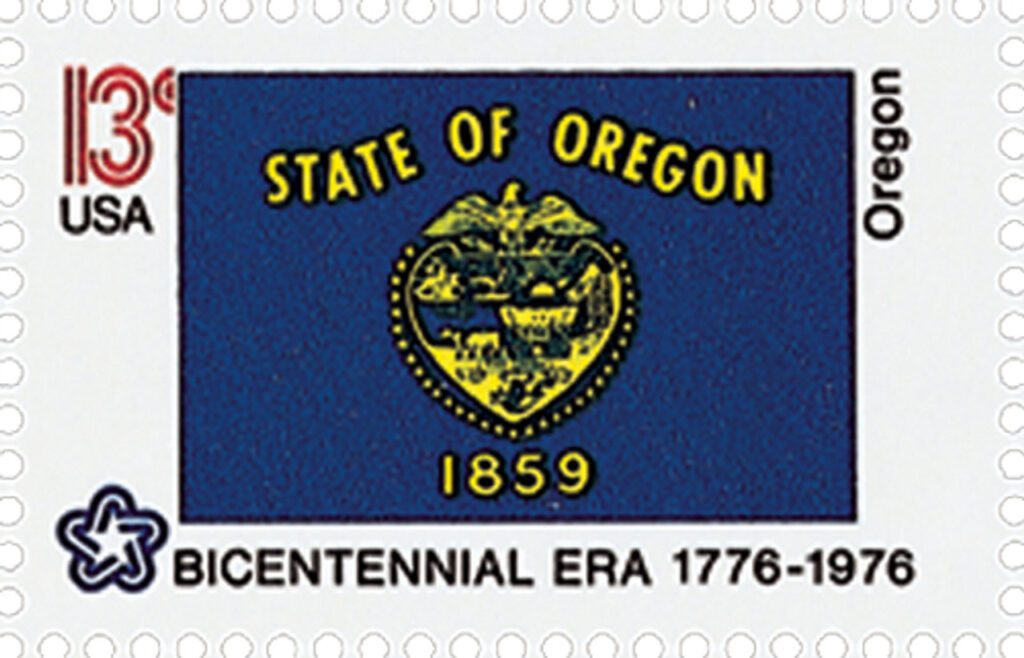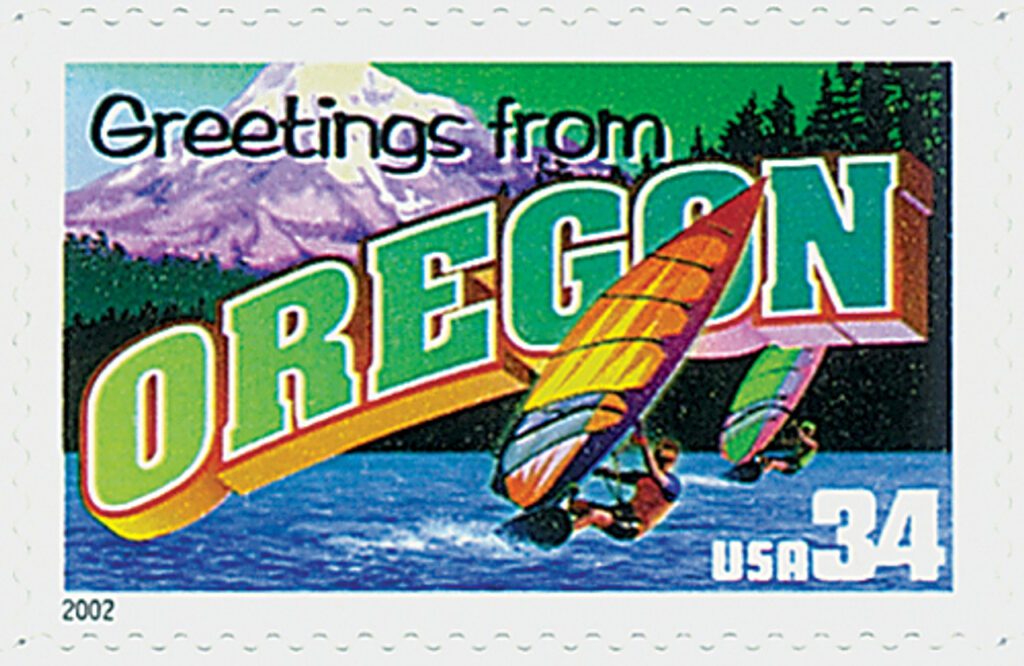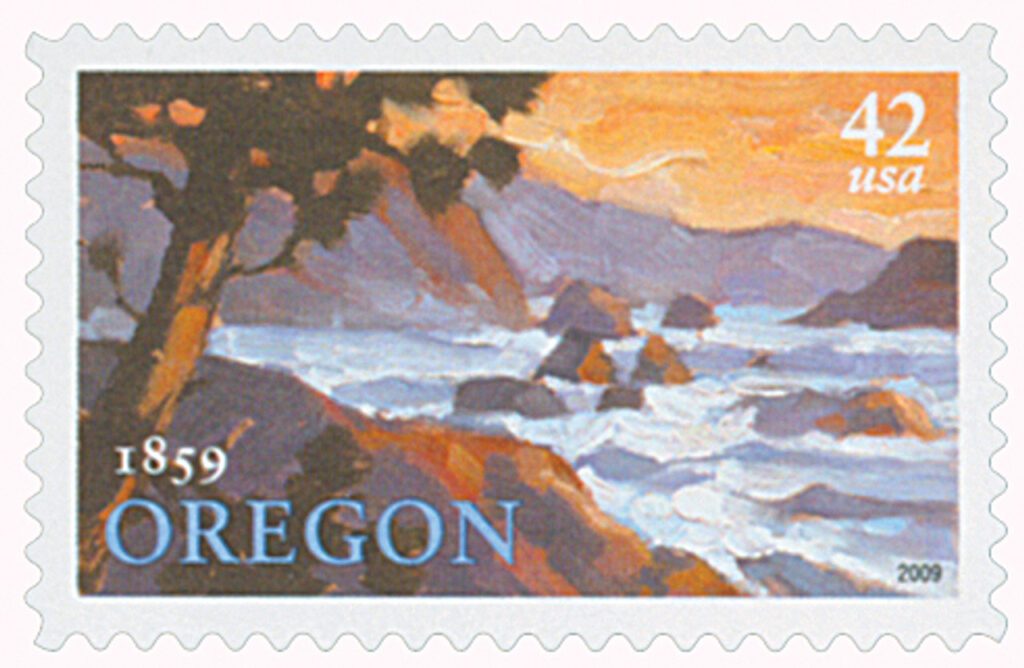On February 14, 1859, Oregon was admitted as the 33rd state in the Union.
There was a large population of Native Americans living in Oregon when the first Europeans arrived. These tribes included the Chinook, Clackama, Kalapuya, Multnomah, Tillamook, Bannock, Cayuse, Paiute, Umatilla (a major band of the Nez Perce), Klamath, and Rogue. Spanish sailors traveling from the Philippines to Mexico were probably the first whites to spot the coast of Oregon. American ships reached the Oregon coast in 1788. In 1792, Captain Robert Gray, an American, was the first European to explore the Columbia River. Gray named the river after his ship. The Lewis and Clark Expedition traveled by land to the mouth of the Columbia River in 1805. These explorations gave the United States solid grounds for claiming the Oregon region.

In the early 1800s, the Oregon region was defined as stretching from Alaska, which was controlled by Russia, to California, which was ruled by Spain. Oregon’s eastern boundary extended all the way to the Rocky Mountains. Russia, Spain, Great Britain, and the United States all made claims on this area.
In 1819, Spain signed a treaty giving up its claim to territory north of latitude 42º, which is modern Oregon’s southern boundary. Russia signed treaties with Great Britain and the US, relinquishing its claims south of 54º 40’. However, the US and Britain could not agree on a boundary, and signed an agreement by which citizens of both nations could settle in Oregon.
American fur trader John Jacob Astor began white settlement of Oregon when he established a fur trading company at Astoria. After the War of 1812, Great Britain took control of Astoria. In 1825, the British Hudson Bay Company established Fort Vancouver at the site of today’s Vancouver, Washington. John McLoughlin served as head of the firm for 20 years – which basically meant he ruled the region. He played a key role in the settlement of the state and is today remembered as the “father of Oregon.”
The first permanent American settlement in Oregon was created in 1834 by Methodist missionaries at Willamette Valley. After this settlement was established, hundreds of Americans began pouring into the area every year. This put pressure on the US and Britain to settle their boundary dispute. In 1844, James K. Polk ran for the US presidency, based on a campaign stating that land south of 54º 40′ belonged to the US. The slogan “Fifty-Four Forty or Fight” became a big part of his campaign. Polk was elected president, and in 1846, he signed a treaty with Great Britain fixing the 49th parallel as the main dividing line between the territories of the two nations.
During the second half of the 19th century, there were a series of bitter wars fought between American Indian tribes and white settlers. These included the Cayuse War, the Rogue River Indian War, and the Modoc Indian War.
Oregon settlers organized a provisional government in 1843. They adopted a set of laws patterned after those of Iowa. In 1848, Oregon became a territory. Oregon City served as the capital until 1850, when it was moved to Salem. In 1853, the Washington Territory was created, and Oregon received the same boundaries it has today. The territory grew fast after the attractive Donation Land Law of 1850 was passed. This law gave 320 acres of land to any US citizen over 18. A settler’s wife could also receive 320 acres.

Oregon achieved statehood on February 14, 1859. Salem served as the capital city and John Whiteaker became the first governor. During the Civil War, state volunteers protected Oregon from Indian attacks. When the war ended, many soldiers moved west, looking for new opportunities. Oregon grew rapidly. In 1860, its population was about 52,000. By 1890, its population reached 300,000.
Oregon instituted laws that allow voters to participate directly in government during the early 1900s. The initiative and referendum laws allow voters to be involved in the lawmaking process. Recall laws allow voters to remove officials from office if they are deemed unsatisfactory. Such direct government procedures became known as the Oregon system. During the Great Depression, the government built Bonneville Dam on the Columbia River. This and other dams made the river navigable and are excellent sources of power. Portland developed as an important shipyard during World War II. Improvements in the timber industry, such as using sawdust and bark to make products, helped make logging more profitable. After suffering an economic depression in the 1980s, Oregon’s economy became more diversified as the electronics, service, and agricultural industries expanded to round out the state’s income.
| FREE printable This Day in History album pages Download a PDF of today’s article. Get a binder or other supplies to create your This Day in History album. |
Discover what else happened on This Day in History.






Thank you for your summary of Oregon history, which is all quite recent. My wife and I moved to Lake Oswego, OR from Thousand Oaks, CA in our mid-60s and have never regretted the move. As desirable a community as Thousand Oaks is, Oregon has so much natural beauty and friendly people. Go Ducks!!
Retired employees of the Hudson Bay Company settled in St. Paul in the French Prairie area (10 miles west of Woodburn) around 1829. The oldest Catholic Church in Oregon (also the oldest brick building) is located in the farming town and was dedicated in 1839.
The Gray and the Lewis/Clark expeditions “gave the United States solid ground to claim the Oregon Territory.” Solid ground against the Native Americans?
“During the second half on the nineteenth Century there were a series of bitter wars fought between the American Indian tribes and white settlers.” They were bitter but who had a right to be “bitter” and who did not? The writer’s bland assertion suggests the wars were no different than European conflicts between equal participants when history suggests the conflicts were borderline genocide.